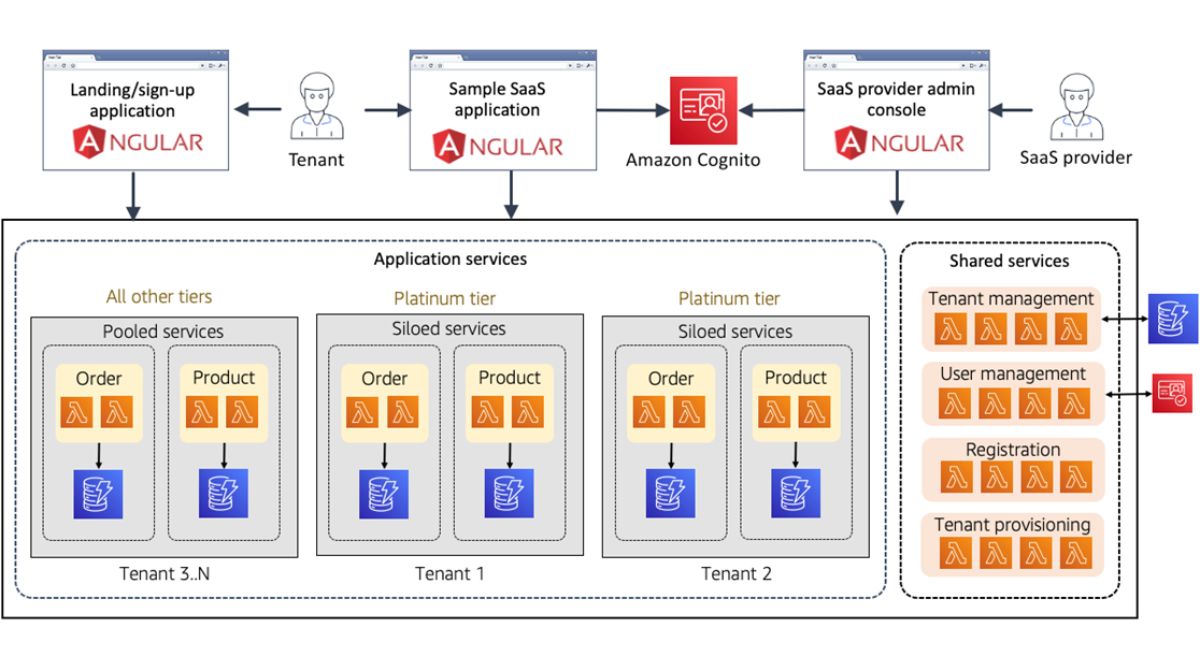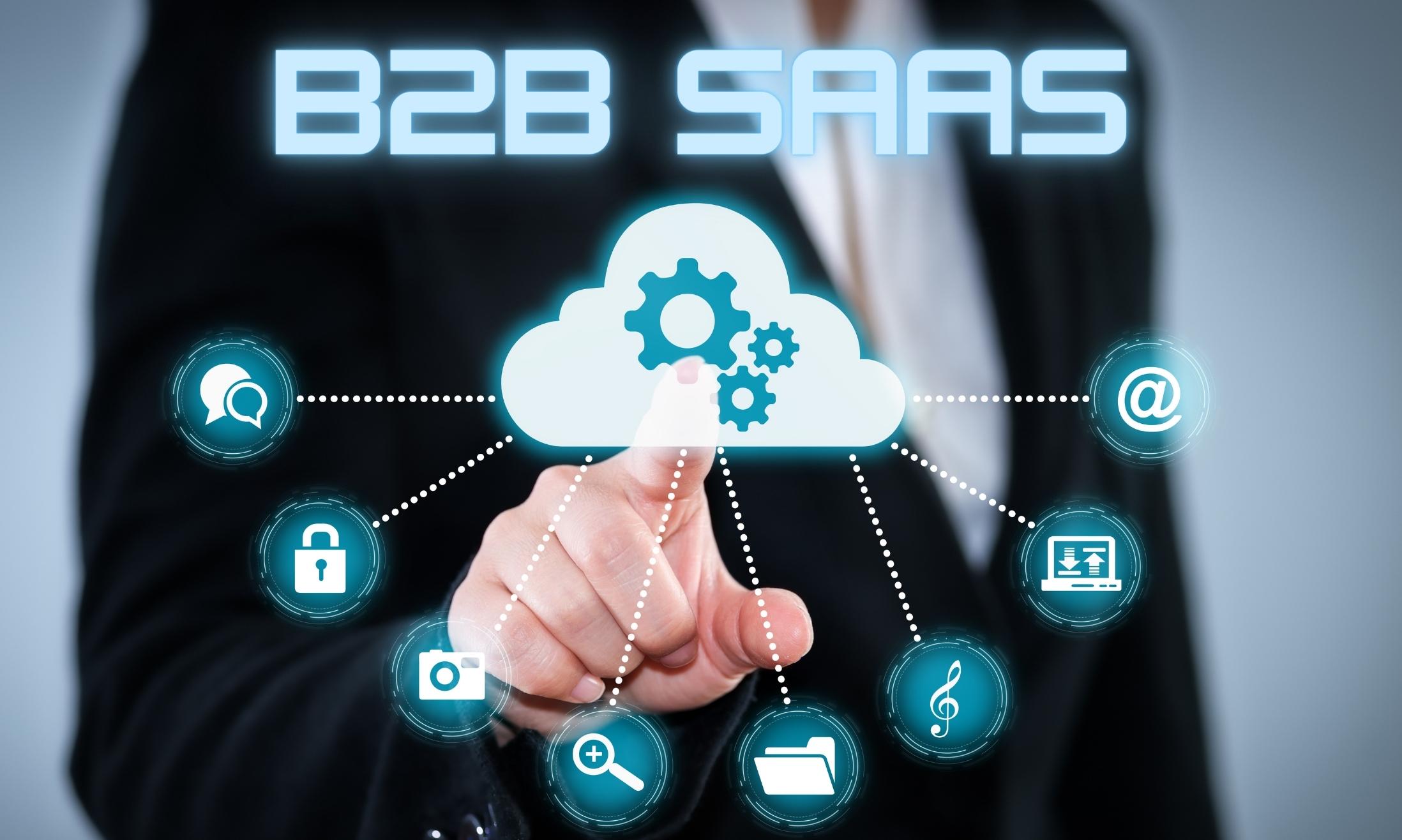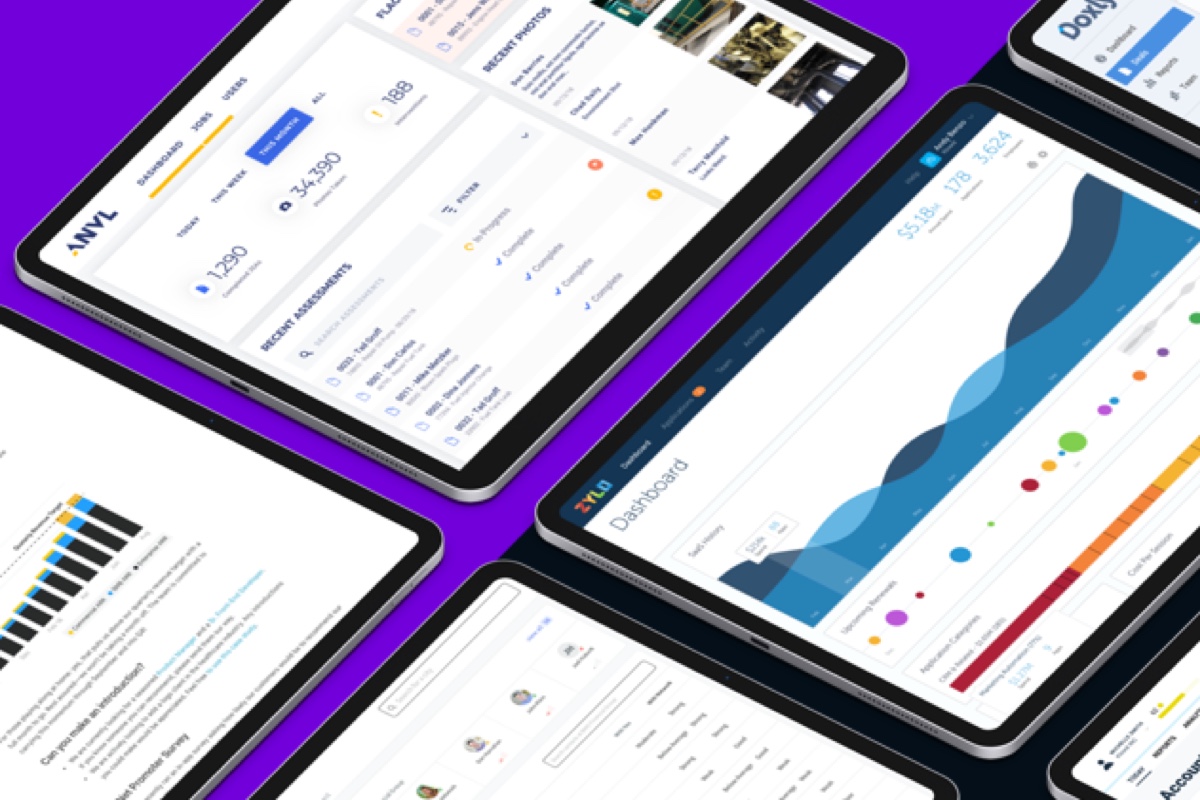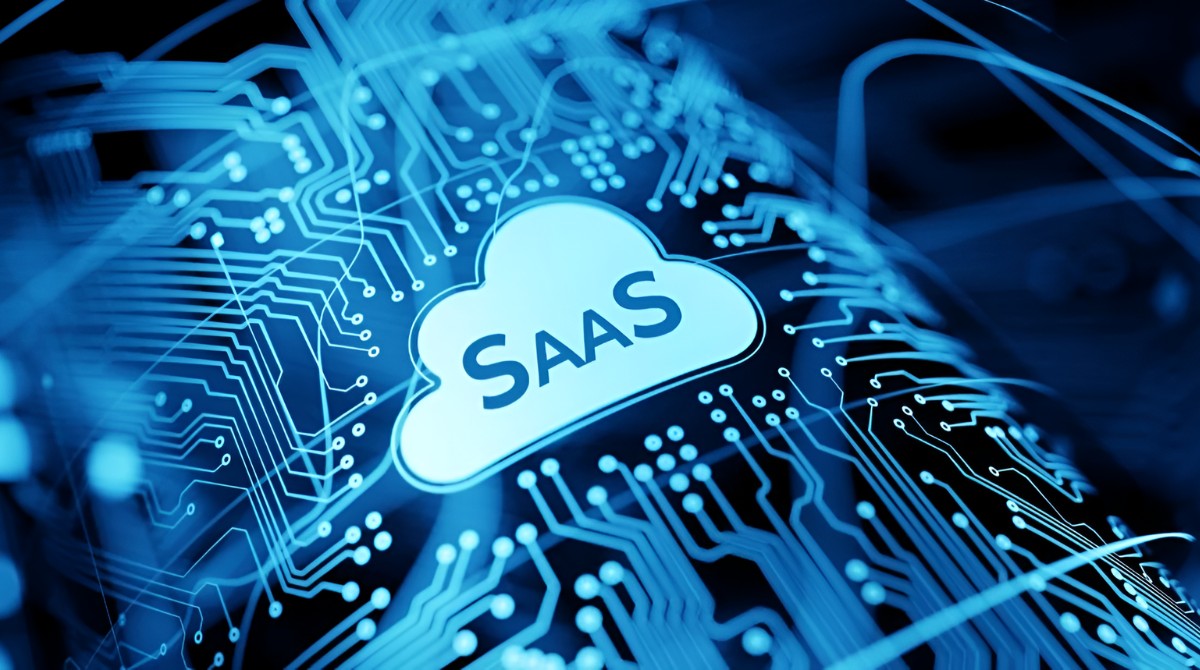Introduction
A multi-tenant Software-as-a-Service (SaaS) application is a software solution that allows multiple customers, also known as tenants, to access and use the application concurrently. This architecture has gained significant popularity in recent years due to its cost-effectiveness, scalability, and efficiency. By sharing infrastructure and resources among multiple tenants, a multi-tenant SaaS application offers numerous benefits, including reduced maintenance costs, simplified updates, and improved resource utilization.
In this article, we will explore the key considerations and best practices involved in building a multi-tenant SaaS application. Whether you are a developer or a business owner planning to develop your own SaaS application, understanding the intricacies of multi-tenancy is essential for success.
Building a multi-tenant SaaS application requires careful planning and implementation to ensure data isolation, security, scalability, and performance. Furthermore, managing tenant configurations, monitoring, and logging are crucial in providing a seamless user experience and efficient application management.
This article will guide you through the various steps involved in building a multi-tenant SaaS application, from defining the tenant architecture to implementing authentication and authorization, managing tenant configurations, optimizing scalability and performance, and ensuring security best practices.
By following these guidelines, you can create a robust and scalable multi-tenant SaaS application that meets the needs of your target audience and provides a secure and efficient user experience. So, let’s dive into the world of multi-tenancy and explore how to build a successful SaaS application.
Understanding Multi-Tenant SaaS Applications
A multi-tenant SaaS application is a type of software architecture that allows multiple users or tenants to access and use the same instance of an application simultaneously. This means that a single instance of the application serves multiple customers, with each customer’s data and settings isolated from other tenants. This architecture is in contrast to single-tenant applications where each customer has their own separate instance of the application.
The concept of multi-tenancy revolves around the idea of resource sharing. In a multi-tenant SaaS environment, the infrastructure and resources, such as servers, databases, and storage, are shared among all tenants. This results in significant cost savings, as the expenses are distributed across multiple customers. Additionally, it enables seamless updates and maintenance, as changes only need to be made once and are applied to all tenants.
One of the key aspects of multi-tenant SaaS applications is data isolation. Each tenant’s data is logically separated from others, ensuring privacy and security. This is achieved through various techniques, such as database partitioning or using a shared database with proper access controls. Data isolation also extends to the customization and personalization options available to each tenant, allowing them to configure the application according to their specific needs.
Another critical component of multi-tenant SaaS applications is tenant scalability. As the number of tenants and their demands grow, the application should scale seamlessly to accommodate the increased load. This requires proper resource allocation, efficient use of infrastructure, and the ability to handle concurrent requests from multiple tenants.
Overall, multi-tenant SaaS applications offer several advantages over single-tenant solutions, including reduced costs, simplified maintenance, and improved resource utilization. They provide a scalable and efficient platform for delivering software services to a wide range of customers. However, building and managing a multi-tenant SaaS application comes with its own set of challenges and complexities.
In the next section, we will explore the benefits of multi-tenant SaaS applications in more detail, shedding light on why businesses are increasingly adopting this architecture for their software solutions.
Benefits of Multi-Tenant SaaS Applications
Multi-tenant Software-as-a-Service (SaaS) applications offer a wide range of benefits that have contributed to their widespread adoption in various industries. Let’s explore some of the key advantages:
1. Cost-Effectiveness: Multi-tenant SaaS applications allow multiple tenants to share the same infrastructure and resources, resulting in significant cost savings. Hardware, software licenses, maintenance, and updates can be shared among all tenants, reducing the overhead costs of each individual customer.
2. Simplified Maintenance: Maintaining and updating a single instance of the application is much simpler compared to managing multiple instances for each customer. Bug fixes, feature enhancements, and security patches can be implemented once and applied to all tenants at the same time, ensuring consistency and efficiency.
3. Scalability: Multi-tenant SaaS applications offer excellent scalability, as infrastructure and resources are shared among tenants. As the number of tenants and their demands increase, the application can easily scale up to handle the additional load. This eliminates the need for individual capacity planning and ensures optimal resource utilization.
4. Improved Resource Utilization: With multi-tenancy, resources such as servers, databases, and storage are shared among tenants, resulting in better utilization. This not only reduces wastage but also allows for dynamic allocation of resources based on each tenant’s needs. Flexibility in resource allocation ensures efficient use of available infrastructure.
5. Rapid Deployment: Multi-tenant SaaS applications enable quick and seamless deployment for new customers. Since the infrastructure and core application are already in place, onboarding new tenants involves only customization and configuration. This significantly reduces the time and effort required to bring new customers on board.
6. Customization and Personalization: Multi-tenant SaaS applications provide a level of customization and personalization to each individual tenant. The application can be tailored to meet specific requirements and preferences, providing a personalized experience without sacrificing the benefits of multi-tenancy.
7. Collaboration and Networking: With multiple tenants using the same application, there are opportunities for collaboration and networking. Tenants can share data, insights, and best practices, fostering a sense of community and enabling learning and growth among customers.
8. Accessible Anywhere, Anytime: Being a cloud-based solution, multi-tenant SaaS applications can be accessed from anywhere and on any device with an internet connection. This level of accessibility enables remote work, enhances productivity, and accommodates the changing needs of modern businesses.
These are just a few of the many benefits of multi-tenant SaaS applications. By leveraging this architecture, businesses can streamline operations, reduce costs, and provide a scalable and efficient software solution for their customers.
Key Considerations for Building a Multi-Tenant SaaS Application
Building a multi-tenant Software-as-a-Service (SaaS) application requires careful planning and implementation to ensure its success. Here are some key considerations to keep in mind:
1. Tenant Architecture: Define the architectural approach for managing multiple tenants in your application. Consider factors such as database design, data isolation, and tenant customization options. Choose between a shared database or separate databases for each tenant, depending on the specific requirements of your application.
2. Data Model Design: Design a flexible and scalable data model that caters to the needs of multiple tenants. Consider tenant-specific data and shared data, and implement data partitioning strategies and access control mechanisms to ensure data isolation and privacy.
3. Tenant Isolation: Implement robust security measures to ensure proper segregation of tenant resources. This includes enforcing strict access controls, encrypting sensitive data, and implementing strong authentication and authorization mechanisms to prevent unauthorized access between tenants.
4. Authentication and Authorization: Develop a reliable and secure user authentication and authorization system. Implement role-based access control (RBAC) to define different levels of access for tenants and their users. Ensure proper session management and implement secure protocols, such as HTTPS, to protect sensitive data transmitted between the application and users.
5. Managing Tenant Configuration: Provide a mechanism for tenants to configure and customize their application settings. This can include options for branding, user interface preferences, and workflow customization. Maintain a clear separation between tenant-specific configurations and shared application configurations.
6. Scaling and Performance Optimization: Plan for scalability right from the start. Consider the potential growth of the tenant base and design your application to handle increased load and concurrent requests. Implement caching mechanisms, optimize database queries, and utilize cloud-based infrastructure services to ensure optimal performance and scalability.
7. Monitoring and Logging: Implement a robust monitoring and logging system to keep track of application usage, performance, and potential issues. Utilize tools and services that provide real-time insights into the application’s health and usage patterns. Monitor resource utilization, response times, and error rates to identify and resolve performance bottlenecks.
8. Security Best Practices: Follow industry-standard security practices to ensure the safety and integrity of tenant data. Regularly update and patch application components, use secure development practices, and conduct periodic security audits. Encrypt sensitive data at rest and in transit, and implement mechanisms to detect and respond to security incidents.
By paying close attention to these key considerations, you can build a robust and scalable multi-tenant SaaS application that meets the needs of your customers while ensuring security, performance, and optimal resource utilization.
Step 1: Define Your Tenant Architecture
The first step in building a multi-tenant Software-as-a-Service (SaaS) application is to define the architectural approach for managing multiple tenants. This involves making decisions about the database design, data isolation, and tenant customization options. Here are some key considerations for defining your tenant architecture:
1. Shared Database vs. Separate Databases: One of the fundamental decisions in multi-tenancy is whether to use a shared database or separate databases for each tenant. A shared database allows for better resource utilization and reduces maintenance efforts. However, data isolation becomes more crucial, requiring proper access controls and data partitioning strategies. On the other hand, separate databases provide strict data isolation but require more resources and maintenance efforts.
2. Data Partitioning: If you opt for a shared database approach, you need to determine how to partition the data to ensure proper isolation between tenants. Common strategies include separating tenant data using a tenant identifier column or applying a database schema per tenant. Evaluate your application’s data access patterns and performance requirements to choose the most suitable partitioning strategy.
3. Customization Options: Consider the level of customization you want to provide to your tenants. Determine the extent to which tenants can customize the user interface, workflows, or branding elements. Define the boundaries of customization to maintain a shared application experience while still allowing tenants to tailor the application to their specific needs.
4. Tenant Onboarding: Determine the process and mechanisms for onboarding new tenants into your application. Define the steps involved, including tenant registration, provisioning of resources, and tenant-specific configuration. Consider automation options to streamline the onboarding process and ensure a seamless experience for new tenants.
5. Tenant Lifecycle Management: Plan how you will manage the lifecycle of tenants within your application. Consider how to handle tenant upgrades, downgrades, and cancellations. Define the process for managing tenant subscriptions, billing, and any trial periods offered. Ensure that tenant data is properly handled during these lifecycle changes.
6. Multitenancy Patterns: Familiarize yourself with various multi-tenancy patterns and choose the one that best suits your application’s requirements. Some common patterns include shared database, separate database, and isolated instances. Evaluate the pros and cons of each pattern and select the one that aligns with your scalability, security, and maintenance needs.
7. Intellectual Property Protection: If your multi-tenant SaaS application allows tenants to customize or extend functionality, consider how you will protect your intellectual property rights. Define the boundaries of customization and ensure that tenant modifications do not compromise the integrity or security of the application.
8. Compliance and Regulatory Requirements: Consider any compliance or regulatory requirements that apply to your tenants. Ensure that your tenant architecture supports adhering to these requirements, such as data privacy regulations or industry-specific standards. Implement necessary security measures and data protection mechanisms to meet these standards.
Defining your tenant architecture is a crucial step in building a successful multi-tenant SaaS application. By understanding the unique needs of your tenants and making informed decisions about data management and customization options, you can lay the foundation for a scalable and efficient application architecture.
Step 2: Designing the Data Model
Designing the data model is a critical step in building a multi-tenant Software-as-a-Service (SaaS) application. The data model defines how data is structured, stored, and accessed within the application. Here are key considerations to keep in mind when designing the data model:
1. Define Tenant-Specific Data: Identify the data elements that are specific to each tenant. These can include tenant profiles, settings, preferences, and any data that needs to be isolated and customized for individual tenants. Determine how this data will be stored and associated with the respective tenants while ensuring data isolation and privacy.
2. Plan for Shared Data: Consider the data elements that are shared among all tenants. These can include reference tables, global configurations, and features accessible to all tenants. Decide how this data will be stored and managed to ensure efficient sharing and consistency across all tenants.
3. Database Partitioning: If you choose to use a shared database approach, plan how the data will be partitioned to isolate tenant-specific information. Identify the mechanisms and techniques for separating tenant data while maintaining strong data integrity and security. Common partitioning strategies include using a tenant identifier column or separate schemas.
4. Data Access Control: Implement proper access control mechanisms to ensure that each tenant can only access their own data. Role-based access control (RBAC) is commonly used to assign different levels of access to tenants. Define the roles, permissions, and restrictions for each tenant to enforce data privacy and prevent unauthorized access across tenants.
5. Consider Data Relationships: Identify the relationships between different data entities in your application. Determine how entities are related to each other and ensure the integrity of these relationships. Consider the impact of tenant-specific data on these relationships and design the data model accordingly to maintain consistency.
6. Scalability and Performance: Design your data model to support scalability and optimize performance. Consider the potential growth of tenant data and the increasing demand on the application’s resources. Implement appropriate indexing, caching, and query optimization techniques to ensure efficient data retrieval and processing.
7. Data Migration and Updates: Plan for data migration and updates to accommodate changes in the data model. Determine how migrations will be performed to ensure minimal disruption to existing tenant data. Implement versioning mechanisms and conduct appropriate testing to verify the integrity and consistency of migrated or updated data.
8. Documentation: Document the data model design, including entity relationships, data schemas, and data access patterns. This documentation will serve as a reference for developers, administrators, and support teams. Update the documentation whenever changes or updates are made to the data model.
Designing the data model of a multi-tenant SaaS application requires careful consideration of tenant-specific and shared data, data relationships, data access controls, scalability, and performance optimization. By following these considerations, you can create an efficient and robust data model that supports the unique needs of your application and ensures data integrity and privacy.
Step 3: Implementing Tenant Isolation
Implementing tenant isolation is a crucial step in building a multi-tenant Software-as-a-Service (SaaS) application. Tenant isolation ensures that each tenant’s data and resources are segregated and protected from other tenants. Here are key considerations to keep in mind when implementing tenant isolation:
1. Access Control: Implement strict access controls to ensure that each tenant can only access their own data and resources. Utilize role-based access control (RBAC) to assign different levels of access to tenants and their users. Define granular permissions to maintain data privacy and prevent unauthorized access between tenants.
2. Data Separation: Determine how tenant-specific data will be separated and stored. This can be achieved by using techniques like database partitioning or separate schemas. Implement data segregation mechanisms to ensure that each tenant’s data is isolated from others, preventing cross-tenant data leakage or tampering.
3. Security Mechanisms: Implement robust security measures to protect tenant data from unauthorized access. Use encryption for sensitive data, both at rest and in transit. Apply secure authentication and authorization mechanisms to ensure that only authenticated and authorized users can access tenant-specific information.
4. Resource Isolation: Ensure that each tenant’s resources, such as compute, storage, and network, are isolated from other tenants. Use resource allocation techniques like virtualization or containerization to provide dedicated resources for each tenant. Additionally, monitor and enforce resource usage limits to prevent one tenant from consuming an excessive amount of resources, affecting others.
5. Performance Optimization: Optimize the performance of your multi-tenant application by carefully managing resource allocation and load balancing. Implement caching mechanisms to store frequently accessed data and reduce the load on underlying resources. Use horizontal scaling techniques to distribute the application workload evenly and enhance overall performance.
6. Data Privacy and Compliance: Ensure that your application complies with data privacy regulations and industry-specific standards. Implement mechanisms to protect personally identifiable information (PII) and sensitive data. Monitor and audit data access to detect any security breaches or data leaks that could compromise tenant data confidentiality and compliance requirements.
7. Testing and Validation: Thoroughly test and validate the tenant isolation mechanisms to ensure their effectiveness. Conduct security testing and vulnerability assessments to identify any potential security weaknesses. Perform integration and regression testing to verify that tenant data remains isolated and the application functions as intended.
8. Ongoing Monitoring and Maintenance: Continuously monitor and maintain the tenant isolation mechanisms as part of your application’s ongoing maintenance. Regularly review access controls and permissions to ensure the integrity of tenant isolation. Stay updated with security patches and updates to mitigate any potential vulnerabilities.
By implementing robust tenant isolation measures, you can ensure the privacy, security, and integrity of each tenant’s data and resources in your multi-tenant SaaS application. This step is crucial in building trust with your customers and creating a solid foundation for a successful and scalable application.
Step 4: Authentication and Authorization
Implementing strong authentication and authorization is essential in building a secure and reliable multi-tenant Software-as-a-Service (SaaS) application. Proper authentication ensures that only authorized users can access the application, while robust authorization mechanisms control what actions they can perform. Here are key considerations for implementing authentication and authorization:
1. Secure User Authentication: Implement secure authentication mechanisms to verify the identity of users. Utilize strong password policies, password hashing, and encryption techniques to protect user credentials. Consider implementing additional authentication factors such as two-factor authentication or biometric authentication for enhanced security.
2. User Registration and Management: Develop a user registration and management system that allows tenants to create and manage user accounts. Implement processes for user account lifecycle management, including account creation, password reset, and account deactivation. Provide self-service options for tenants to manage their users effectively.
3. Role-Based Access Control (RBAC): Implement RBAC to define different levels of access for tenants and their users. Determine the roles and permissions required for each role, mapping them to specific actions or features within the application. Enforce strict access controls to ensure that users can only access the resources and functionalities that they are authorized for.
4. Tenant-Specific Access Controls: Consider the need for tenant-specific access controls and permissions. Some tenants may require additional access levels or custom permissions based on their specific use cases. Implement mechanisms to handle tenant-specific access requirements while maintaining overall security and integrity.
5. Session Management: Implement secure session management to ensure that user sessions are properly authenticated, authorized, and protected. Use secure session tokens or cookies, implement session timeouts, and provide mechanisms to revoke or invalidate sessions when necessary.
6. Data Privacy Compliance: Ensure that your authentication and authorization processes comply with relevant data privacy regulations, such as the General Data Protection Regulation (GDPR). Implement mechanisms to handle user consent, data access requests, and data deletion requests in a secure and compliant manner.
7. Audit Trails and Logging: Implement logging and audit trails to track user activities and access within the application. This helps in detecting and investigating any suspicious or unauthorized behavior. Maintain logs for a specified period of time for compliance and security audits.
8. Continuous Security Updates: Stay updated with the latest security best practices and vulnerabilities. Regularly update and patch any security-related components of your authentication and authorization system. Monitor security bulletins and conduct regular security testing to identify and mitigate potential security risks in this critical area.
By implementing robust authentication and authorization mechanisms, you can ensure the security and integrity of your multi-tenant SaaS application. This step is crucial in protecting sensitive data, preventing unauthorized access, and instilling trust in your application among tenants and users.
Step 5: Managing Tenant Configuration
Managing tenant configuration is an important aspect of building a multi-tenant Software-as-a-Service (SaaS) application. Tenant configuration encompasses settings, preferences, and customizations that can be applied by each individual tenant. It allows tenants to personalize their experience and tailor the application to meet their specific needs. Here are key considerations for managing tenant configuration:
1. Tenant-Specific Customization: Define the scope of customization that you want to offer to your tenants. Determine which aspects of the application can be customized, such as branding elements, user interface options, or workflow configurations. Clarify the boundaries to ensure a consistent user experience across all tenants while allowing for personalization.
2. Configuration Management Interface: Develop an intuitive and user-friendly interface for tenants to manage their configurations. This can include a dedicated portal, settings pages within the application, or API endpoints. Ensure that the configuration management interface provides clear and accessible options for tenants to modify their settings.
3. Configuration Persistence: Determine how tenant-specific configurations will be persisted and stored. This can be achieved through databases, configuration files, or other appropriate storage mechanisms. Ensure that the persistence method allows for easy retrieval and application of tenant configurations during runtime.
4. Granular Configuration Options: Provide granular configuration options to accommodate the diverse needs of tenants. Consider offering configuration settings at different levels, such as global settings, group settings, and individual user settings. Enable tenants to customize their environment based on their specific requirements while maintaining overall application consistency.
5. Validation and Error Handling: Implement validation mechanisms to ensure that tenant configurations are within acceptable limits and do not cause conflicts or errors within the application. Perform proper input validation and error handling to provide clear and actionable feedback to tenants in case of incorrect or incompatible configuration changes.
6. Configuration Versioning: Implement a versioning system to track and manage changes to tenant configurations. This allows for easy rollback or restoration of previous configurations if necessary. Maintain a history of changes and provide an audit trail for configuration modifications to aid in troubleshooting and debugging.
7. Integration with Tenant Onboarding: Integrate the configuration management process with the tenant onboarding workflow. Provide a seamless experience for new tenants to configure their settings during the registration or provisioning process. Ensure that configuration changes are applied accurately and consistently for each newly onboarded tenant.
8. Configuration Backup and Restoration: Implement mechanisms to back up and restore tenant configurations. Regularly back up tenant configurations to prevent data loss or accidental changes. Provide a straightforward method for tenants to restore their configurations if needed, enabling them to revert to previous configurations with ease.
Managing tenant configuration is essential in delivering a personalized and adaptable experience within your multi-tenant SaaS application. By providing flexible configuration options and a reliable management interface, you enable tenants to customize the application to their specific needs while maintaining overall stability and consistency.
Step 6: Scaling and Performance Optimization
Scaling and performance optimization are critical considerations in building a successful and reliable multi-tenant Software-as-a-Service (SaaS) application. As the number of tenants and their demands grow, the application should scale seamlessly to accommodate the increased load while maintaining optimal performance. Here are key considerations for scaling and optimizing the performance of your multi-tenant SaaS application:
1. Horizontal Scaling: Plan for horizontal scalability to handle increased traffic and workload. Consider options such as load balancing, auto-scaling, or containerization to distribute the application workload across multiple instances. This ensures availability, maintains performance, and improves the overall user experience.
2. Efficient Resource Utilization: Optimize resource utilization to ensure efficient use of infrastructure. Identify resource-intensive operations and optimize them to reduce bottlenecks and improve overall application performance. Utilize caching mechanisms, optimize database queries, and leverage efficient algorithms and data structures to minimize resource usage.
3. Database Scaling: Evaluate the scalability requirements of your database system. Consider using database sharding, data partitioning, or database replication to distribute the database load and handle increased data volumes. Implement indexing strategies and optimize database queries to improve database performance.
4. Performance Monitoring: Implement a robust monitoring system to track application performance and identify areas for improvement. Monitor key performance metrics such as response times, throughput, and error rates. Utilize monitoring tools and services to gain insights into the application’s health and to proactively address performance issues.
5. Performance Testing: Conduct thorough performance testing to identify bottlenecks and optimize critical components. Simulate realistic workload scenarios to evaluate the application’s performance under different conditions. Identify and address any scalability or performance limitations to ensure the application can handle the expected workload.
6. Content Delivery Network (CDN): Consider utilizing a CDN to improve the delivery of static and cacheable content, such as images, CSS, and JavaScript files. A CDN helps reduce load times, minimizes latency, and improves overall user experience by caching content in servers located closer to end-users.
7. Asynchronous Processing: Implement asynchronous processing for long-running or resource-intensive operations. Offload tasks such as file processing, data imports, or complex calculations to background jobs or distributed systems. This allows the application to respond quickly to user requests and ensures a smooth user experience.
8. Continuous Performance Optimization: Performance optimization is an ongoing process. Continuously monitor and fine-tune performance by analyzing application metrics and user feedback. Embrace a culture of continuous improvement and iterate on performance optimizations to provide the best possible experience for your tenants.
By prioritizing scalability and performance optimization, you ensure that your multi-tenant SaaS application can handle increasing loads and deliver a responsive and efficient experience to your tenants. Implementing the right scaling strategies, monitoring performance metrics, and regularly optimizing your application are key to its long-term success.
Step 7: Monitoring and Logging
Monitoring and logging are crucial components of building and maintaining a reliable multi-tenant Software-as-a-Service (SaaS) application. Effective monitoring allows you to track the health, performance, and usage of your application, while logging provides valuable insights for troubleshooting and auditing purposes. Here are key considerations for implementing monitoring and logging in your multi-tenant SaaS application:
1. Metrics and Key Performance Indicators (KPIs): Identify the metrics and KPIs that are most relevant to your application and tenants. Monitor essential metrics such as response times, throughput, error rates, and resource utilization. Establish benchmark values for these metrics to ensure optimal performance and identify potential issues before they affect the user experience.
2. Real-Time Monitoring: Implement real-time monitoring to track the health and performance of your application. Utilize monitoring tools and services that provide real-time insights into the application’s behavior and performance. This enables you to respond promptly to any issues and ensure continuous availability and stability.
3. Alerting and Notifications: Set up alerts and notifications to proactively address any critical issues or abnormal behavior in your application. Configure alerts for specific threshold violations, errors, or performance degradation. Establish clear escalation paths for issue resolution and ensure that the appropriate team members are notified promptly.
4. Logs and Log Management: Implement robust logging mechanisms to capture relevant information about application events, errors, and user activities. Properly structured and organized logs enable effective troubleshooting and debugging. Centralize log management to aggregate, analyze, and search logs efficiently, allowing you to identify and rectify issues quickly.
5. Application Performance Monitoring (APM): Consider implementing APM tools to monitor the performance of your application at a more granular level. APM tools provide insights into code-level performance, database queries, and external service integrations. This helps in identifying specific areas requiring optimization and improving overall application performance.
6. Log Retention and Archiving: Define policies for log retention and archiving to comply with regulatory requirements and facilitate long-term analysis. Determine the duration for which logs should be retained based on compliance standards and business needs. Properly archived logs enable retrospective analysis for security audits, troubleshooting, and performance optimization.
7. Log Analysis and Search: Utilize log analysis and search tools to analyze log data effectively. Implement search capabilities to quickly locate specific logs based on keywords, timeframes, or other criteria. Leverage log analysis tools to identify patterns, outliers, and trends that can help in troubleshooting, diagnostics, and security incident detection.
8. User Experience Monitoring (UXM): Consider implementing UXM tools to track and measure the user experience within your application. Collect data on user interactions, load times, and errors to understand the overall user satisfaction and identify areas for improvement. Incorporate this information into your monitoring and optimization efforts.
Implementing effective monitoring and logging practices enables you to stay ahead of potential issues, ensure optimal performance, and deliver a reliable multi-tenant SaaS application. By monitoring key metrics, leveraging logs for debugging, and proactively addressing issues, you can continuously enhance the user experience and maintain a competitive edge.
Step 8: Security Best Practices
Ensuring robust security measures in a multi-tenant Software-as-a-Service (SaaS) application is of utmost importance when it comes to protecting tenant data, maintaining trust, and complying with relevant regulations. Here are key security best practices to consider:
1. Secure Authentication and Authorization: Implement strong and secure authentication mechanisms, such as multi-factor authentication and password hashing. Use authorization controls, like role-based access control (RBAC), to enforce proper permissions and roles within the application.
2. Data Encryption: Utilize encryption protocols to safeguard sensitive data, both at rest and in transit. Implement encryption techniques such as Transport Layer Security (TLS) for secure data transmission and encryption algorithms for protecting data stored in databases or files.
3. Regular Security Audits: Conduct regular security audits and assessments to identify vulnerabilities and weaknesses in your application. Perform penetration testing and vulnerability scanning to ensure that security measures are effective and up-to-date.
4. Secure Coding Practices: Adhere to secure coding practices, such as input validation, output sanitization, and protection against common security vulnerabilities like Cross-Site Scripting (XSS) and SQL Injection attacks. Follow industry best practices, frameworks, and OWASP guidelines to mitigate security risks.
5. Secure APIs and Integrations: Implement stringent security measures for APIs and integrations. Securely authenticate and authorize API requests, validate input and output data, and ensure that data transfers between systems are encrypted and protected.
6. Security Incident Response: Establish a clear and well-defined security incident response plan. Outline the steps to be taken in the event of a security breach or incident, including communication, containment, investigation, and mitigation processes. Regularly test and update the incident response plan to address evolving threats.
7. Privacy Protection: Comply with data privacy regulations such as the General Data Protection Regulation (GDPR) by implementing appropriate privacy policies and obtaining necessary consent. Handle personally identifiable information (PII) responsibly and ensure secure data handling, storage, and disposal practices.
8. Ongoing Security Training and Awareness: Provide regular security training to employees and stakeholders to raise awareness about security best practices, data protection, and handling sensitive information. Foster a culture of security and accountability throughout the organization.
9. Security Patching and Updates: Stay updated with security patches and software updates for all components of your application, including frameworks, libraries, and third-party dependencies. Regularly monitor security bulletins and implement patches promptly to address any identified vulnerabilities.
10. Secure Hosting Environment: Choose a secure hosting environment that meets industry-standard security practices. Select a cloud provider or hosting service that offers strong security measures, data redundancy, and compliance certifications.
By following these security best practices, you can significantly enhance the security posture of your multi-tenant SaaS application and protect tenant data from potential threats or breaches. Proactively addressing security concerns is crucial in building trust with your customers and ensuring the long-term success of your SaaS offering.
Conclusion
Building a multi-tenant Software-as-a-Service (SaaS) application requires careful consideration of various factors, from defining the tenant architecture to implementing robust security measures. Understanding the intricacies of multi-tenancy and following best practices in each step is essential for creating a successful and reliable SaaS application.
By implementing the right tenant architecture, designing a scalable data model, ensuring tenant isolation, and implementing strong authentication and authorization, you can provide a secure and efficient application for your customers. Managing tenant configuration, optimizing scalability and performance, implementing monitoring and logging, and following security best practices further enhance the quality and reliability of your SaaS offering.
A successful multi-tenant SaaS application provides numerous benefits, including cost-effectiveness, simplified maintenance, scalability, and improved resource utilization. Users and tenants can benefit from customization options, seamless onboarding, and access to a feature-rich application that can be accessed anytime, anywhere.
However, building and maintaining a multi-tenant SaaS application is an ongoing effort. Continuous monitoring, performance optimization, security updates, and adherence to best practices are essential to ensure the longevity and success of your application.
Ultimately, a well-executed multi-tenant SaaS application offers a scalable, cost-effective, and user-friendly solution that meets the diverse needs of customers. By following the steps outlined in this article and staying informed about industry trends and advancements, you can create a multi-tenant SaaS application that provides value, enhances productivity, and drives success for your business.

























